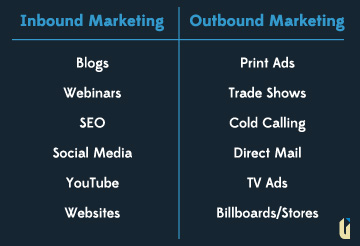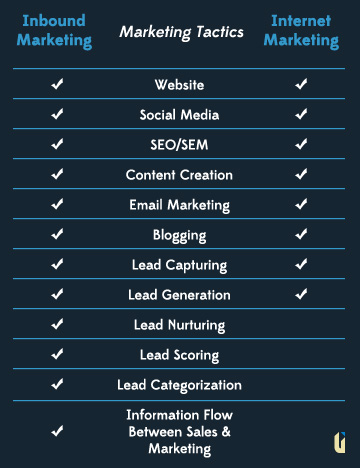We are in the people business. In order to most effectively do our jobs we need to understand people – their likes and dislikes, habits and routines, wants and needs and their buying behaviors. The marketing world has noticed a transition into online purchasing behavior which includes everything from research to the final purchase. For this reason, inbound marketing has become a leading component in marketing strategies. But, what is inbound marketing and why do you need it?
Inbound Marketing is New, Which Makes Outbound Marketing Old – but Not Dead
Inbound marketing is a combination of online marketing tactics working to interact and develop relationships with potential customers PLUS engaging in a continual flow of information between sales and marketing. It works to complement the way buyers make purchasing decisions by offering information, and engaging throughout the process. Traditional marketing, on the other hand, aims to absorb buyers' attention through advertisements, direct mail and cold calling.
Inbound marketing offers information to people who are already engaged in a buying cycle. Whether they are just doing research or they are searching for a specific product or service to buy, inbound marketing is there to provide what it is they are looking for. Outbound marketing, in opposition, provides information to a mass amount of people who may or may not be engaged in a buying cycle, often interrupting an activity. Inbound marketing is often easier to track, prove ROI and acheive a high success rate because it we can target a specific, interested audience.
This is not to say outbound marketing is dead. We strongly believe traditional, outbound marketing has a prominent place within a marketing and advertising strategy. Inbound and outbound marketing should complement one another and weave in and out of their respective campaigns and strategies.
Outbound marketing generally requires a large budget due to the cost of the tactics involved. According to Ad Age, Super Bowl XLVII spots averaged between $3.7 and $3.8 million. The Super Bowl is an extreme example, but it very clearly depicts the high costs associated outbound advertising. However, the fact that companies are willing to spend that much money on a TV advertising goes to show that outbound marketing still has a place and a purpose within marketing strategies.
Here are some examples of methods and tactics used in each form of marketing:

Inbound & Internet Marketing
The first phase of our inbound marketing services includes providing information our target audience seeks, at the time they seek it, in a location they are seeking. In essence, this is what internet marketing is. Internet marketing is the combination of tactics such as SEO, social media and email marketing used to capture and generate leads. Internet marketing is a major component of inbound marketing. Inbound marketing takes a step beyond internet marketing, a second phase, and closes the loop between sales and marketing by nurturing leads into qualified, sales-ready potential customers.

If inbound marketing were a three legged stool, internet marketing would be one leg, lead nurturing would be the second leg and the third leg would be the information flow between sales and marketing. Inbound marketing cannot function properly without these three components.
Marketing continually evolves as our buyers’ behaviors change. The shift to online purchasing behaviors has increased the value and importance of inbound marketing. We believe it is a necessary component of any marketing strategy.
If this is new to you or you would like to brush up on the basics, the best place to start the inbound marketing process is with internet or online marketing.
